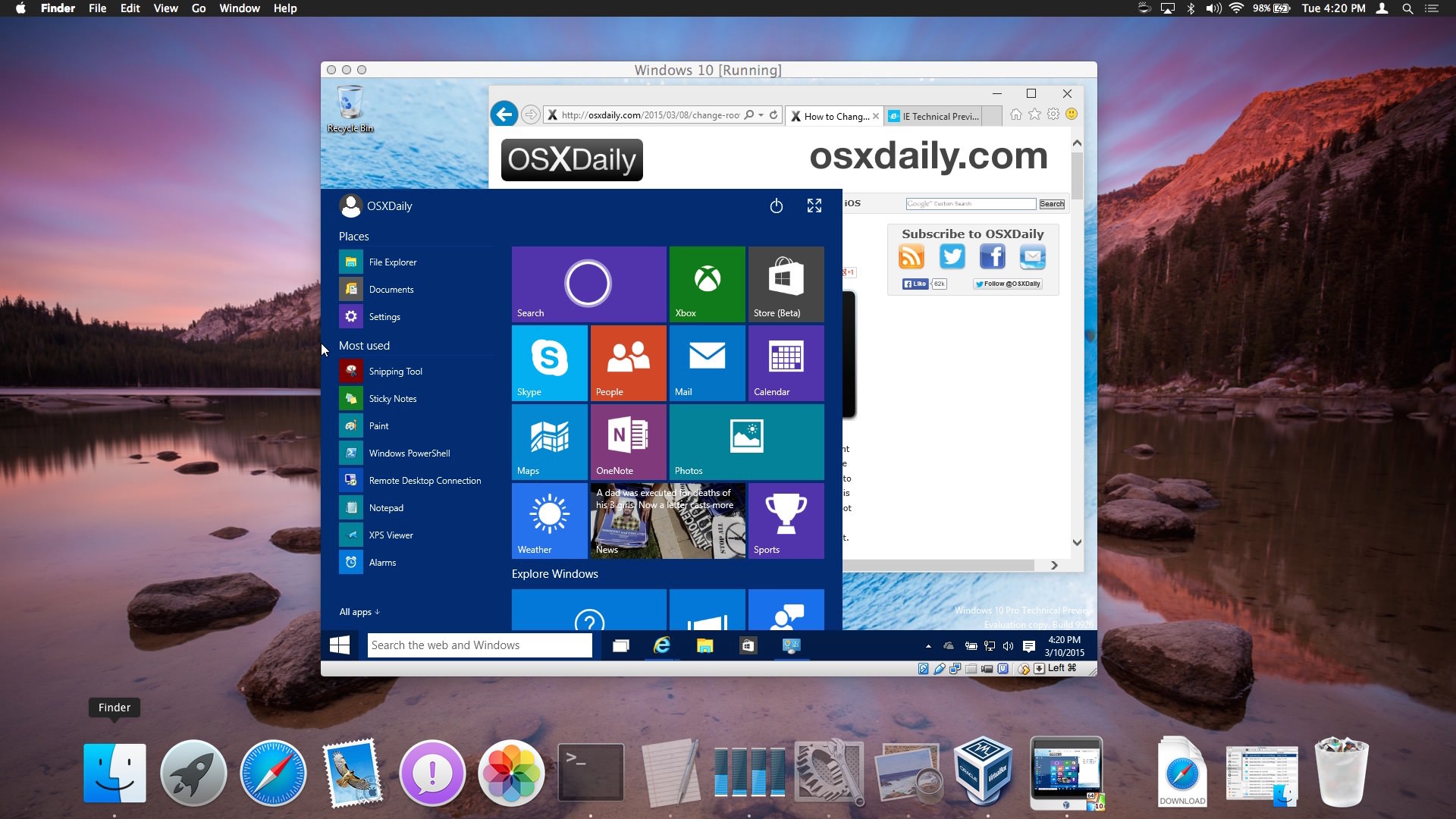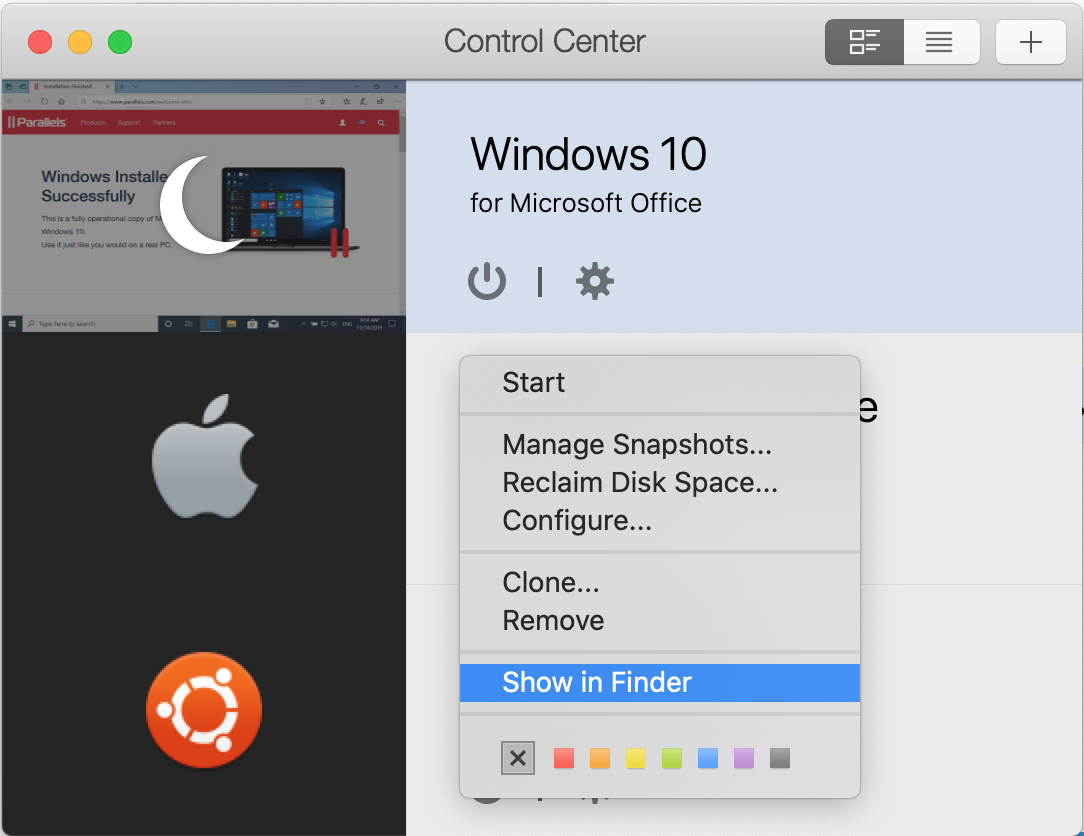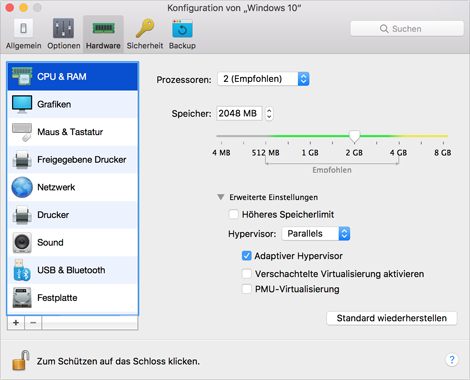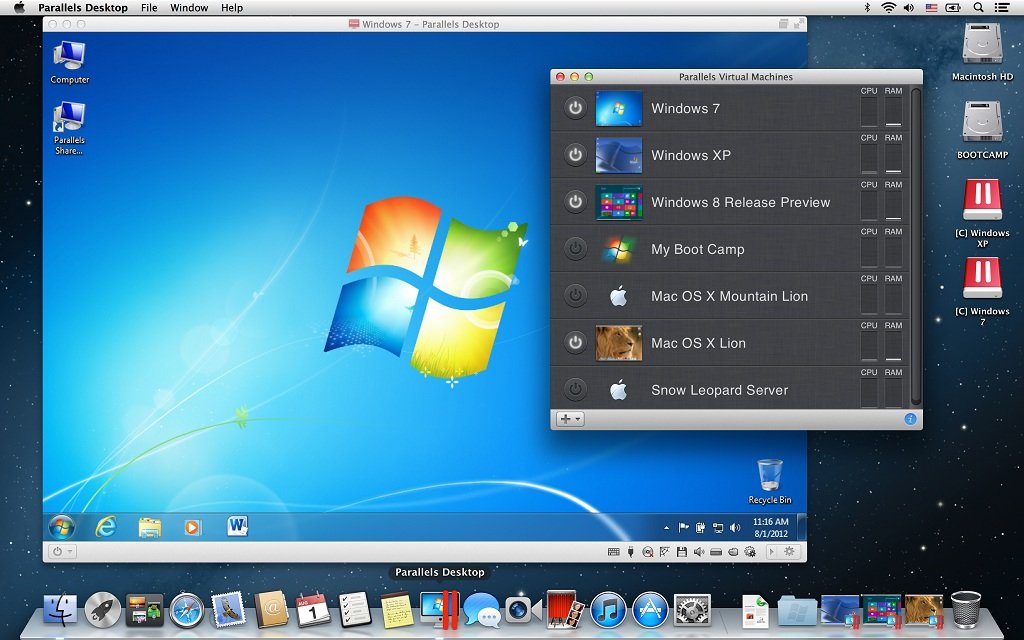- Your personal account at Parallels: manage your Parallels product licenses, get technical support, ask questions on the Parallels product forums.
- Parallels Desktop. If the secondary platform you'll be using on the Mac is Windows, then Parallels Desktop will streamline its deployment. Thanks to its convenient one-click install option, users can just instruct the app to download a legitimate copy of Windows from Microsoft. While both hypervisors do their job well, what makes the difference between Parallels Desktop and VMware Fusion are.
There was a time when Apple was thought to be the most valuable brand name in the world, and for good reason. Apple helped shaped the software industry through years of cut-throat and highly competitive competition with Microsoft.
Parallels isn’t the cheapest option or the one that gives you the best performance, but with a few reservations, I’d say it’s still the best way to run Windows on a Mac for most people, if.
Most recently, Apple’s greatest success revolves around the iPhone, but their Mac computer lines have gathered masses of devout and zealous followers who think Mac OSX is superior to Windows.

And in many rights, Mac OSX is higher quality than Windows software. Most of the coding is proprietary, and the software performs better than Windows in several key areas. It’s more secure, it crashes less, and it even looks sleeker. What’s not to love? Well, there is one problem that could be seen as the Achilles’ Heel of Mac systems: software availability.
Since Microsoft Windows systems are much more numerous and prevalent than Mac systems, more software is written for Windows computers. There just aren’t as many third-party applications written for Mac OSX. And if you’ve got a Mac computer, that means you could be missing out on the latest applications, security tools, and video games…unless you use virtualization technologies, of course.
It stinks when developers fail to port a great application over to the Mac world, but you can run virtual instances of code framework to virtualize a Windows system on your Mac.
Today we’re going to be looking at two of the most popular solutions: VMWare Fusion and Parallels Desktop.
Before we begin, however, I do have one disclaimer to make. I am a huge fan of VMWare, and have been using their virtualization software for years.
Main Differences Between VMware Fusion vs Parallels
The main differences between VMWare Fusion and Parallels are:
- VMware Fusion offers deeper customization and integration features, whereas Parallels is easier to set up out of the box
- Parallels is slightly faster in our speed tests compared to the slower VMware Fusion
- Parallels is better suited for casual users, whereas VMware Fusion is best suited for technical users
Having said that, I will be as objective as possible to remove any bias. With that out of the way, let’s take a closer look at these two cool virtualization solutions.

Parallel’s Pricing
Parallel’s pricing model is rather complex. The price you pay is determined by a variety of features including the following:
- Which version you want (Desktop 15 for Mac, Desktop 15 Pro for Mac, or Business Edition)
- Whether you want a new license or you want to upgrade an existing license
- Whether you want a 1-year subscription or a 1-time purchase
Though that may seem pretty contrived, I actually like how flexible it is for several reasons. First of all, you have a smattering of package options to choose from, so you can get exactly what you need without overpaying for extra features you don’t want. In addition, users who have an existing license don’t have to pay the entire cost of a new license when upgrading to a new plan.
The following outlines the pricing model for the Parallels Desktop 15 for Mac package:
1 Time Purchase
- 1 Computer, new license – $79.99
- 2 Computers, new license – $159.98
- 3 Computers, new license – $239.97
- 4 Computers, new license – $319.96
- 5 Computers, new license, 5 computers – $399.95
1 Year Subscription
- 1 Computer, new license, 1 computer – $69.99
- 2 Computers, new license, 2 computers – $139.98
- 3 Computers, new license, 3 computers – $209.97
- 4 Computers, new license, 4 computers – $279.96
- 5 Computers new license, 5 computers – $349.95
- Upgrade from 10 or 11, 12, etc – $49.99
The Pro and Business versions have similar pricing plans, though they are a bit more expensive. I would also like to draw your attention to the price difference between the one-time purchase and the one-year subscription.
You’re really only saving about $10 per computer when you opt for the one-year subscription as opposed to the one-time purchase. As such, I’m not sure I see a lot of value in the subscription option, especially if you’re only looking for a single license.
VMWare Fusion Pricing
Parallels Mac Os
Why not spend an extra $10 and own the software for life? VMWare Fusion uses an eerily similar pricing model based on mostly the same factors.
The largest difference is that VMWare doesn’t offer a subscription model, and instead only charges for licenses of their software. And I think they’re pretty price competitive, too. VMWare’s pricing model for VMWare Fusion is as follows:
1 Time Purchase
- 1 Computer, new license – $79.99
- 2 Computers, new license – $159.98
- 3 Computers, new license – $239.97
- 4 Computers, new license – $319.96
- 5 Computers, new license, 5 computers – $399.95
- Upgrade from 4.5 and higher – $49.99
As you can see, the price to purchase either provider’s virtualization software is exactly the same. I thought that was pretty odd since you usually see minute differences in two providers’ prices as a way to undercut the competition.
So, I’ll sum up the pricing war in two simple thoughts. First of all, don’t get the subscription version of Parallels Desktop since it doesn’t really save you that much money. Second of all, if you’re going to purchase the software, the cost is exactly the same. At least for now…
Parallels Desktop 15 Features
Parallels Desktop has a lot of great features, though its main purpose is to run applications as though they are running in their native environment.
For instance, you can run Windows apps on a Mac without needing to reboot your computer or dual boot. The latest version does have support for Windows 10 and Mac OS Sierra, so you’re covered with the latest and greatest operating systems.
Interestingly enough, Desktop 15 comes with 1 year of online backups, though the cap is at 500GB. Still, it’s better than nothing if you’re not already using a cloud backup service.
There are some limitations on the virtual machines, but I didn’t think they were really encumbering. Virtual machines are limited to 8GB of virtual RAM and 4 virtual CPUs for each VM.
Plus, it’s worth taking a moment to talk about virtual machine creation.
To create a virtual Windows instance, you’ll have to essentially “copy” a Windows license. If you don’t have one already, then you’ll need to obtain a new Windows OS (legally), and then create a virtual machine of that installation in Parallels Desktop. Alternatively, you can create a virtual machine instance from a current installation, which is what I would recommend if the option is available to you.
That way, all of your software, settings, user accounts, and system files will be exactly the same. Doing so will allow you to essentially import all of your data into a virtual machine instance running on your Mac. And by using cloud storage (Dropbox Storage, iCloud Drive, etc…), file syncing and folder syncing (smart sync feature), or a shared local volume (on the local hard drive disk, and shared NAS partition, etc.), you’ll easily be able to access data on both operating systems.
However, that’s really all there is to the basic version. The Pro and Business versions have a lot more features, but they cost a lot more money, too. If you’re just trying to run a few Windows applications on Mac, I’d recommend going for the basic version. Just so you know, advanced features in the Pro and Business versions include the following:
- Enhanced virtual hardware (64GB vRAM and 16 vCPUs)
- Support for Microsoft Visual Studio
- Advanced networking features
- Business cloud services support and premium 24/7 technical support
- Enhanced management interfaces for administrators in business environments
- Unified volume license key
Also, I’d like to mention that Parallels Desktop 15 doesn’t only provide Windows support. It also supports a variety of Linux distributions including CentOS, Ubuntu, Fedora, and Debian distributions.
It’s also worth noting that a lot of traditional Mac users think the Parallels interface is more Mac friendly than the Fusion interface, which is little more streamlined and minimalistic.
VMWare Fusion 11 Features
Likewise, VMWare Fusion 8.5 also has the ability run a smattering of Linux virtual machines in addition to versions of Windows.
And like Parallels Desktop 15, you can run Windows applications side by side applications running on Mac OSX. It is, of course, designed to support Windows 10 and OS Sierra.
However, instead of bundling cloud storage space in with Fusion, VMWare is currently offering a promotion that includes a McAfee Antivirus Plus 90-day subscription. I think that’s awesome, because Mac users need antivirus as much as Windows users these days, and a lot of people forgo any antivirus protection at all.
Parallels Vm For Mac Versions
Vegas video for mac. In addition, after you have registered your license, you get 18 months of free email support in English. However, it’s only email-based support, but I suppose it’s better than nothing.
And as far as support is concerned, there are plenty of how-to videos that show you how to make common configurations and perform a little bit of troubleshooting to get your software tweaked, personalized, and configured just how you want it.
Additionally, other notable features include the following:
- Support for Windows Server 2016
- Tabbed views
- Support for Siri
- 0 users don’t need to pay to upgrade to 11
- Many integrations, including Google Drive (Google Cloud), Dropbox for Business (via VMWare AirWatch
How Does VMWare Compare to Others?
Final Thoughts: VMWare Fusion vs Parallels
This comparison was very close since both VMWare and Parallels Desktop 15 are extremely similar. And since the pricing models are nearly identical, you can’t use cost as a way to justify one solution’s value over the other.
Mac driver for samsung 4100. In the end, I think I have to go with VMWare Fusion over Parallels Desktop 15.
Believe it or not, Fusion is the more popular solution over Parallels. Despite Mac users’ affinity for the Parallels user interface, more people still opt for the VMWare solution. And many users feel that VMWare’s upgrade policy is less convoluted than Parallel’s (myself included), especially since 11 users don’t have to pay for an upgrade.
Lastly, as always, I highly advise you to take advantage of the free trial if you’re still undecided. VMWare has been a leader in the virtualization industry for years, and have a long history of providing stable and cutting-edge virtualization technologies with innovative features.
That said, if you’re a born and bred Mac user, you may prefer Parallels since it has a sleeker and more Mac-like interface.
Bottom Line: The objectively “better” solution is definitely the more transparently priced and larger VMWare Fusion solution here. However, if you are very attached to the Mac-like interface, Parallels can save you some frustration here, and is a good runner-up.
Further Reading: Bootcamp vs Parallels Compared and VMWare vs VirtualBox Compared.
Last updated April 3, 2018
The Apple Device Enrollment Program (DEP) is a crucial building block for the modern macOS deployment workflow. When configured correctly, Apple DEP enables a business to purchase new Apple computers that automatically configure themselves, install necessary software, and enroll in an MDM upon unboxing and first boot- without hands-on intervention by DevOps or IT.
Before a business goes live with Apple DEP, a validation phase typically takes place. This allows a business to become comfortable with the DEP process as well as confirm that their DEP account and MDM configurations are working as expected.
Testing a DEP workflow can be time consuming. The workflow can only be tested when a device starts up and is initialized for the first time. As a result, using virtualization software such as VMware Fusion, Parallels Desktop, or VirtualBox is often much more practical than reinstalling the OS on a Mac computer after each test. Most, if not all virtualization software supports snapshotting, allowing a user to “roll back” their device state to a designated point in time. This makes it easy to revert a macOS image to a point just before the initial DEP process begins.
Clean uninstall for mac autodesk. Through working with our customers and our own internal development efforts, we’ve put together a guide that we’d like to share with you.
First: Your Mileage May Vary
It is worth stating that using DEP and MDM with virtual machine technology can be rather finicky and exhibit odd behaviors not seen when testing with physical devices. For this reason, we do not recommend using DEP or MDM with virtual machines in any capacity beyond workflow testing. As examples, if a FileVault configuration isn’t working or a device is not enrolling over the MDM user-channel, it may be due to using virtual machine technology.
Additionally, we cannot recommend using VirtualBox at this time. We’ve provided more information on this below.
Creating a Virtual Machine
To get started, you will need to create a virtual machine. Various methods exist for creating an initial macOS virtual machine, some specific to a particular VM technology. Here are a few useful resources that walk through the process:
- Parallels Desktop:Creating a DEP VM using Parallels Desktop (jerbecause.wordpress.com)
- VMware Fusion: How to create a VM that’ll work with DEP on VMware Fusion (rderewianko.com)
- VirtualBox: How to create a macOS High Sierra VM to run on a Mac host system (tobiwashere.de)
A Common Gotcha: Invalid Auto-Generated Serial Numbers
MacOS expects the serial number of the device it is installed on to be alphanumeric. If you plan to link your VM to Apple DEP, you will be setting the serial number of the VM to be equal to the serial number of a real Apple device, so this will not be a problem.
If you are not specifying the serial number of the VM yourself, note that some VM technologies generate a serial number with special characters. For instance, a serial number similar to “fZjdIehS/ds+” can be generated by VMware. If the VM has a serial number that is not alphanumeric, macOS will appear to enroll with an MDM, but will ultimately not complete the process or be able to communicate with the MDM to receive configuration or further commands.
Linking to Apple DEP
Upon first boot, macOS presents the user with the Setup Assistant. Once an internet connection has been established, macOS contacts Apple to determine if the device is configured for DEP. When the device contacts Apple, it provides its device serial number as a form of identification. Apple, in turn, provides the device with a DEP configuration if available. This DEP configuration is fairly minimal; it specifies basic configurations like whether the device is to be placed in supervised mode and if it should enroll in an MDM.

Since the serial number acts as the device identifier for DEP, the virtual machine you create will need to be configured to use a serial number that exists in your DEP account. We suggest using a serial number for a computer that is no longer in use, or at the very least, has a low likelihood of being wiped at any point, since using the serial number in a test DEP workflow would invariably cause the device to also enter the workflow.
Below are configurations for each virtual machine technology. Replace [SERIAL] with the serial number of the device. “mac_hw_model”, at this time, does not need to be accurate for the provided serial number.
Be sure to use straight double quotes and not curly quotes.
Parallels Desktop
Shut down the VM. Within Parallels Desktop, visit the configuration screen for the VM image, select the “Hardware” tab, and navigate to the “Boot Order” option. Expand the “Advanced Settings” disclosure and enter the following in the text box:
VMware Fusion
Shut down the VM. Locate the VM file on your computer. These, by default, appear in “~/Documents/Virtual Machines/”. Right click the file and select “Show Package Contents”. Within the resulting window, locate a file with a “vmx” extension and open it with a text editor. Add the following lines:
VirtualBox
Note: VirtualBox’s network virtualization appears to work quite differently than Parallels and VMware and causes macOS to have issues contacting DEP during the Setup Assistant. As a result, we have found VirtualBox to be quite troublesome to work with when testing DEP and advise against it.
If you wish to try anyway, the following VBoxManage command line interface command can be used to set the serial number of the VM. Note that “[VM NAME]” must match the name of the virtual machine that you are modifying:
Snapshotting Before Setup Assistant
A DEP configuration effectively acts as a bootstrap. It provides a device with enough configuration to complete the Setup Assistant and enroll it with an MDM. That is the extent of its responsibility. As a result, Setup Assistant contacts Apple DEP exactly once during the initialization process. If you change your DEP configuration at any latter, the device will not receive the updated configuration.
It’s important to snapshot the virtual machine image before Setup Assistant has a chance to contact DEP. Because most VMs have access to internet at boot and do not have to wait for WiFi credentials, the outreach to DEP can occur very early on in the Setup Assistant process, before progressing past the first screen.
We recommend taking a VM snapshot before the Setup Assistant becomes visible. This can take a bit of practice; it is easiest to take a few snapshots while the VM is still installing macOS so that you can revert to a previous point and have a second chance to take a “closer” snapshot if needed. Additionally, we have found that reverting to this snapshot is sometimes not enough. With Parallels in particular, we revert the snapshot and then immediately “reset” the VM. Without a reset, we sometimes see old cached DEP data or a company name of “(null)” during the Setup Assistant screens.
Wrapping It Up
Was this article helpful? Missing something? Help future readers by providing any helpful tips in the comments below.

